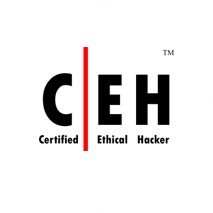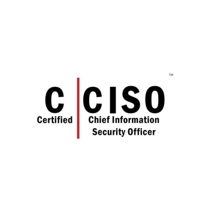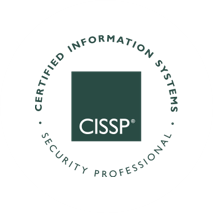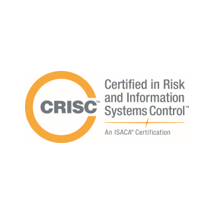This is our Specialist course for Appsec Developers and is part of the AppSecOps course.
In this 2-Day Intermediate hands-on course delegates will gain an understanding of application security vulnerabilities including the industry standard OWASP Top 10 list and learn strategies to defend against them.
Pen testing (security testing) as an activity tends to capture security vulnerabilities at the end of the SDLC and then it is often too late to influence fundamental changes in the way the code is written.
Web application security tends to be addressed only when vulnerabilities are found on applications running in production. Addressing these vulnerabilities at that stage becomes an expensive affair. These vulnerabilities arise primarily because developers are not sensitized against their impact and more importantly their fixing/patching.
The aim of this class is two-fold:
- Sensitize developers about application security vulnerabilities and their impact through live exploitation of a vulnerable application.
- Guide the developers to identify the root cause of the vulnerability in code, patch it, re-deploy the application, and finally verify the fix. All of this completely from the browser.
Throughout this class, developers will be able to get on the same page with security professionals, understand their language, learn how to fix or mitigate vulnerabilities learnt during the class and get acquainted with some real-world breaches, for example, “The Equifax” breach in September 2017. Various bug bounty case studies from popular websites like Facebook, Google, Shopify, Paypal, Twitter etc will be discussed explaining the financial repercussions of application security vulnerabilities like SSRF, XXE, SQL Injection, Authentication issues etc.
The application that the audience will interact with is a Shopping cart application built on a microservices architecture and deployed using docker. Microservices are built using different languages like Java, .NET Core, PHP, Python, NodeJS, HTML and JavaScript each containing different vulnerabilities that needs patching.However, the approach is kept generic and developers from other language backgrounds can easily grasp and implement the knowledge learned within their own environments.
Each Delegate will be provided a separate lab infrastructure that is accessible completely from the browser.Delegates will participate in a CTF challenge where they will have the chance to identify vulnerabilities in code snippets derived from real-world applications.
Fast track available
2 day course
Available by Partners
Live, online available
Hack-Lab is available
Intermediate
AppSec for Developers - Webinar
Global credit reporting agency Equifax, Australian telecommunications giant Optus, and even the Shanghai Police force have recently fallen victim to cyberattacks that exploited weaknesses in software – vulnerabilities that could have been identified and remediated through secure application development practices. How you develop your applications is as essential to their security as any other defensive control. This video introduces application security for developers. Learn direct from our experienced, practicing pentesters well-versed in how to hack applications (and how to find and fix those weaknesses).
In the video:
- Practical application security skills and knowledge to use everyday
- Techniques and tools to help make secure coding second nature
- The ins and outs of DevSecOps to help you totally transform your dev practices from the ground up
Whether you’re a software developer, a dev team lead, or just looking to expand your security skills, this video will help you explain how to remain relevant in an increasingly security conscious industry.
To find out more about our Application Security for Developers course and register, click here.
Course Overview
As it is critical to introduce security as a quality component into the development cycle, this course has been written by developers turned Pen Testers who can help you to code in a secure manner.
Pen testing as an activity tends to capture security vulnerabilities at the end of the SDLC and it is then often too late to influence fundamental changes in the way the code is written.
The class is a highly practical and we cover a variety of best security practices and in-depth defense approaches which you should be aware of while developing applications. The class also covers quick techniques which you can use to identify various security issues throughout the code review proces.
Upcoming courses
Enquire about your training
We provide training directly (remote or in person) and also work with a range of training partners in different locations around the globe for classroom or remote training. Please contact us with details of your requirement and we will recommend the best route to access our amazing training.

The course can also be booked directly through our accredited training partners.

If booked through Check Point, Cyber-Security Learning Credits are accepted for this course.
For security and IT decision makers
What’s the real impact of training your team through NotSoSecure?
Make your organisation a less attractive target to attackers by building a team that can write code resistant to complex, modern attacks, without losing business functionality and development speed. Trained delegates can:
- Write secure application code resilient to a variety of web-based attacks in the OWASP top 10.
- Understand how attackers identify vulnerabilities in code, and the impact of this, so they can adopt more secure ways of working.
- Identify and mitigate security vulnerabilities earlier on in the development lifecycle.
- Use a vocabulary of risk and exploitation to work more effectively with security practitioners.
- Understand the business impact of application security and articulate this to key stakeholders.
- Take on greater responsibility in the team and become an advocate of security in the wider business.
Course Details
You will be able to:
- Understand OWASP Top 10 with practical demonstrations and deeper insight.
- Delve into various bug bounty case studies from popular websites like Facebook, Google, Shopify, Paypal, Twitter.
- Participate in a CTF challenge where you will have the chance to identify vulnerabilities in code snippets derived from real-world applications.
- Gain an insight into the latest security vulnerabilities, such as host header injection, XML external entity injection, attacks on JWT tokens, deserialization vulnerabilities.
- Design best security practices following an introduction to various security frameworks and tools and techniques for secure application development.
- Get on the same page with the security team while discussing vulnerabilities.
- Understand the financial repercussions of different vulnerabilities.
You will receive:
Apart from the various tools and content around the course Delegates will also be provided with a 7-day lab access where they can practice all the exercises/demos shown during the course.
What you can take away from the course:
- Understand OWASP Top 10 with practical demonstrations and deeper insight.
- Understand the financial repercussions of different vulnerabilities.
- Get on the same page with the security team while discussing vulnerabilities.
- Identify and Fix security vulnerabilities much earlier in the SDLC process saving time and effort.
Details of the course content:
APPLICATION SECURITY BASICS
- Why do we need Application Security?
- Understanding OWASP TOP 10
UNDERSTANDING THE HTTP PROTOCOL
- Understanding HTTP/HTTPS protocol
- Understanding Requests and Responses – Attack Surface
- Configure Burpsuite to intercept HTTP/HTTPS traffic
SECURITY MISCONFIGURATIONS
- Common misconfigurations in Web Applications
- Sensitive Information exposure and how to avoid it
- Using Softwares with known vulnerabilities
INSUFFICIENT LOGGING AND MONITORING
- Types of Logging
- Introduction to F-ELK
AUTHENTICATION FLAWS
- Understanding Anti-Automation Techniques
- NoSQL Security
AUTHORIZATION BYPASS TECHNIQUES
- Securing JWT and OAuth
- Local file Inclusion
- Mass Assignment Vulnerability
CROSS-SITE SCRIPTING (XSS)
- Types of XSS
- Mitigating XSS
CROSS-SITE REQUEST FORGERY SCRIPTING
- Understanding CSRF
- Mitigating CSRF
SERVER-SIDE REQUEST FORGERY (SSRF)
- Understanding SSRF
- Mitigating SSRF
SQL INJECTION
- Error and Blind SQL Injections
- Mitigating SQL Injection
- ORM Framework: HQL Injection
XAML EXTERNAL ENTITY (XXE) ATTACKS
- Default XML Processors == XXE
- Mitigating XXE
UNRESTRICTED FILE UPLOADS
- Common Pitfalls around file upload
- Mitigating File upload vulnerability
DESERIALIZATION VULNERABILITIES
- What is Serialization?
- Identifying Deserialization functions and deserialized data
- Mitigation strategies for deserialization
CLIENT-SIDE SECURITY CONCERNS
- Understanding Same Origin Policy
- Windows Desktop ‘Breakout’ and AppLocker Bypass Techniques (Win 10)
- Client-Side Security headers and their server configurations
SOURCE CODE REVIEW
- What to check for Security in source code
- CTF: A timed game to spot the flaws in the given Source Code samples
DEVSECOPS
- DevSecOps – What Why and How?
- Case Study
Prerequisites
Who Should Take This Class?
This course is ideal for Web/API developers who work day-in-day out building full-stack web applications or web APIs. Anyone who is looking to develop a skill-set into web application security and is looking to identify web application flaws will also benefit from this course.
Delegate Requirements
Delegates need to have a basic understanding of how web applications work with an added advantage for those who currently develop web applications. This training is a programming language agnostic.
What you will need:
A Laptop with minimum 4 GB RAM and 1 GB of extra space is also required.
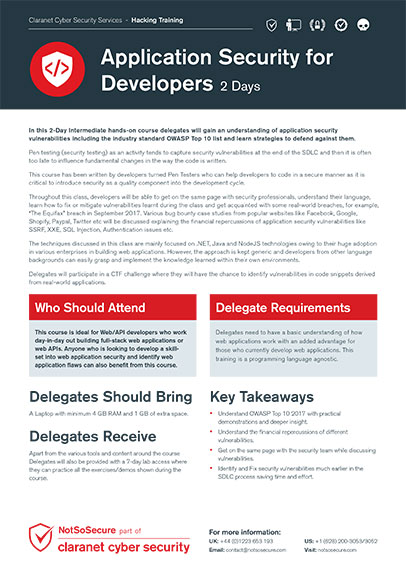
Course Information
You can download a copy of the course information below.
In addition you will also be provided with a student pack, handouts and cheat-sheets if appropriate.
Your Training Roadmap
Offensive Classes
Hacking training for all levels: new to advanced. Ideal for those preparing for certifications such as CREST CCT (ICE), CREST CCT (ACE), CHECK (CTL), TIGER SST as well as infrastructure / web application penetration testers wishing to add to their existing skill set.
Defensive Classes
Giving you the skills needed to get ahead and secure your business by design. We specialise in application security (both secure coding and building security testing into your software development lifecycle) and cloud security. Build security capability into your teams enabling you to move fast and stay secure.
Testimonials
These trainings from NotSoSecure are world class (Black Hat Level) and truly worth it."
Delegate, Black Hat AppSecOps Course
The trainer was very knowledgeable and paced the training about right - strong practical focus complemented the 'theory'. All in all very pleased with the training - and much better experience and value than any previous courses I have attended where the trainer was a generalist delivering to a 'script'."
Delegate, Private QA AppSec class
Good course, knowledgeable trainer. Excellent Demos!"
Delegate, Private QA AppSec class
The tools presented are excellent. It was good that there had obviously been a lot of work done on finding good tools for each piece of the course."
Delegate, AppSecOps Course
The content was really interesting and I like the real-world examples of what was being explained."
Delegate, AppSecOps Course
Thank you @notsosecure and @nullcon for the extensive training on DevSecops. Really engaging and a great learning session. Worth mentioning the material and the hands on-lab. Kudos to the team and their hard work for a smooth experience."
Delegate, Nullcon 2021
Our accreditations
